Indigenous Companion Planting in the Great Churn
: Three Sisters in Kalapuya Ilihi
EPE: Nature and Space
Indigenous Companion Planting in the Great Churn: Three sisters in Kalapuya Ilihi
Brian Klopotek, Talon Claybrook and Joe Scott
Previously published in Environment and Planning E: Nature and Space. https://doi.org/10.1177/25148486221126618
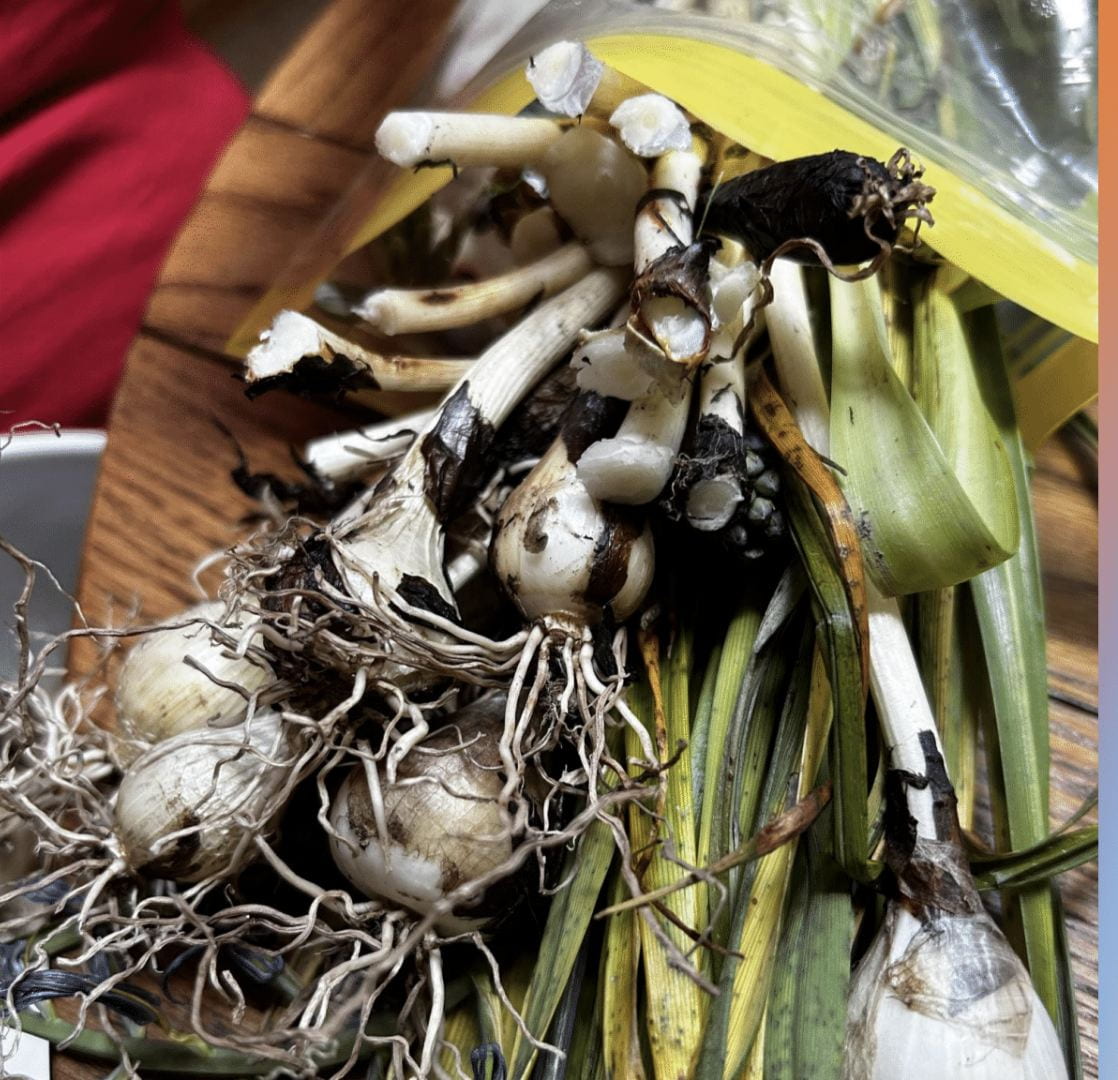
Camas bulbs partially in plastic Ziplock bag. Photo by Alai Reyes-Santos. May 2023
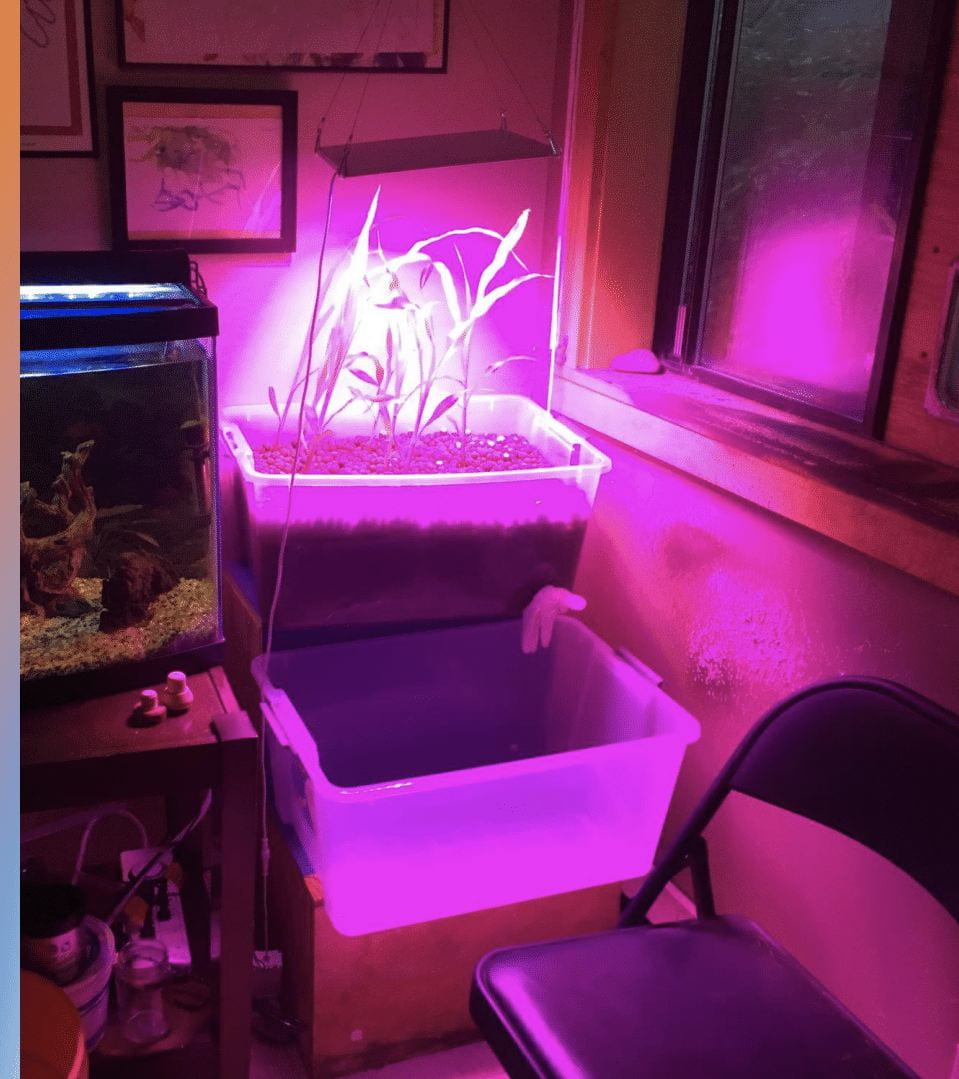
Aquaponics rig with corn and growlight in Talon’s house. Photo by Brian Klopotek. Shared on May 2023
How can the millions of Indigenous individuals living outside their Indigenous homelands—by force or by choice or somewhere in between—participate in Indigenous food sovereignty? What does it mean to grow corn in a place where it wasn’t grown before?
Two of us, Talon Claybrookand Brian Klopotek, come from Corn peoples but ended up outside our homelands in the great churn of contemporary Indigenous life. Our dislocation made us want to grow corn to feel connected with our distant homelands and relatives, but we were living in Kalapuyailihi, the homelands of the Kalapuyanpeoples of the Willamette Valley of Oregon, nearby to the homeland of our third author, Joe Scott.
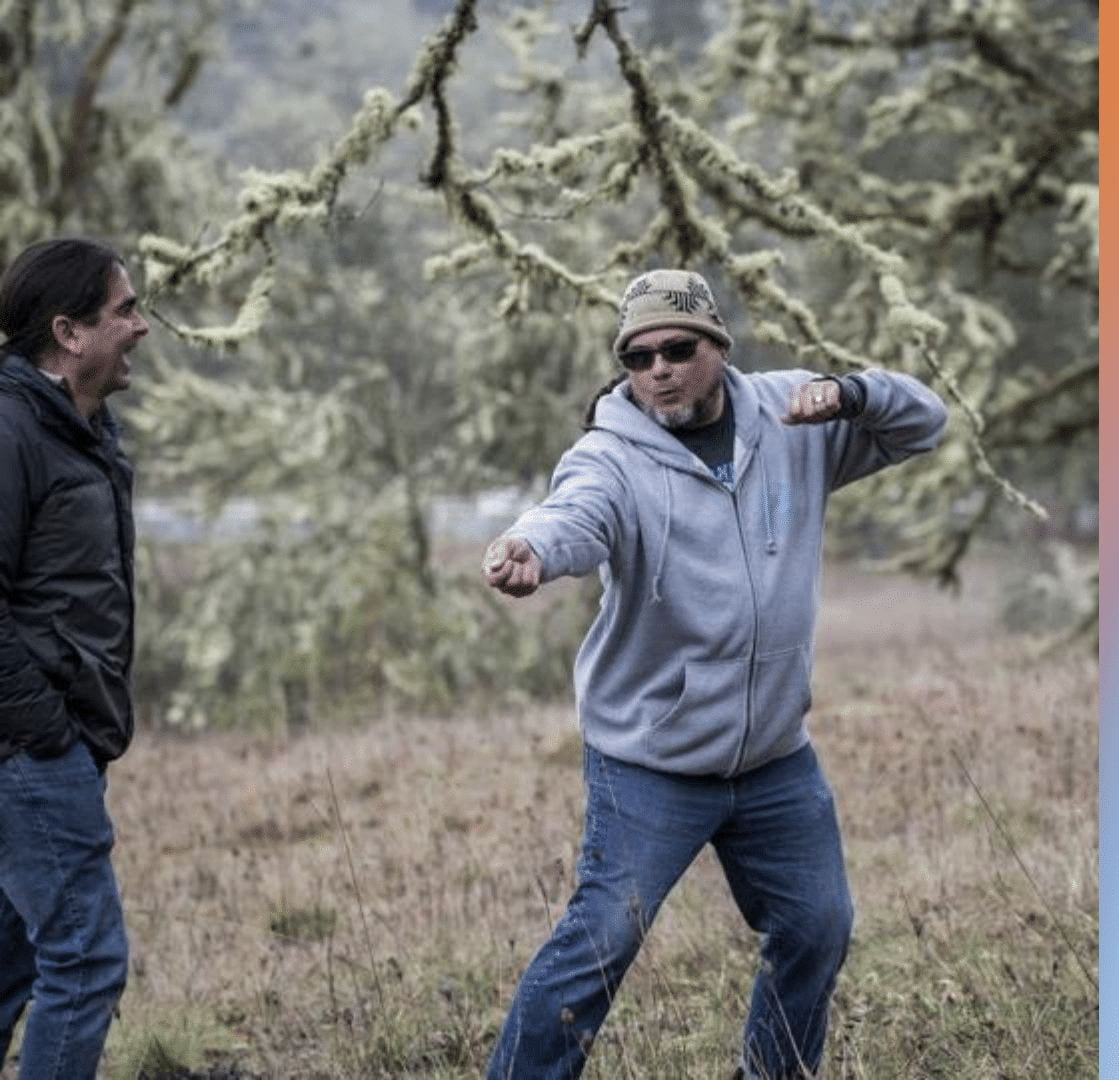
Brian and Joe in Reasoner Preserve smiling and enjoying a good time. Photo by Kezika Setyawan. March 2019

Talon Claybrook with camas plants on a sunny day in Eugene. Photo by Brian Klopotek. Shared on May 2023.
The original peoples here did not adopt corn agriculture, instead relying on ecosystem management in varying intensities to produce bountiful harvests of camas, berries, acorns, and many other edible plants, in addition to their beloved salmon and other creatures of land and sea. So how would Talon and Brian engage in Indigenous food sovereignty while living in Kalapuya ilihi? This was the question we set out to answer.
Engaging in Indigenous food sovereignty projects together came with a set of lessons for all of us not only about food, but also about place, Indigenous mobility, and relational community building. We came to understand companion planting as an analogy, an aesthetic, and a mode for the kind of relational world we want to live in.
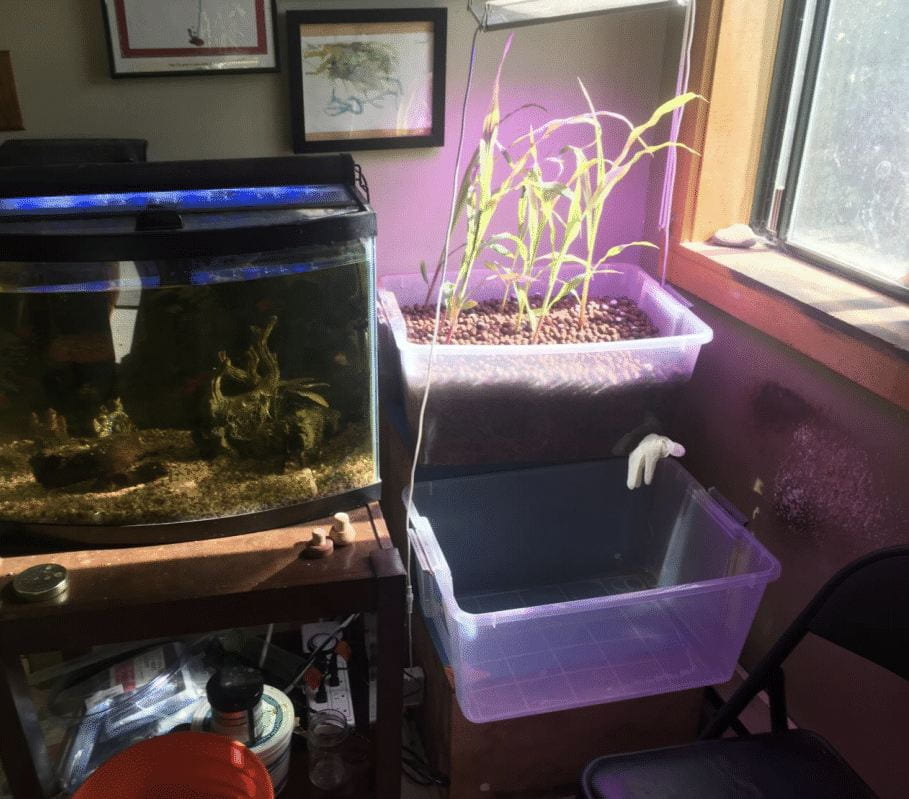
Aquaponics rig with corn and growlight in Talon’s house. Photo by Brian Klopotek. Shared on May 2023.
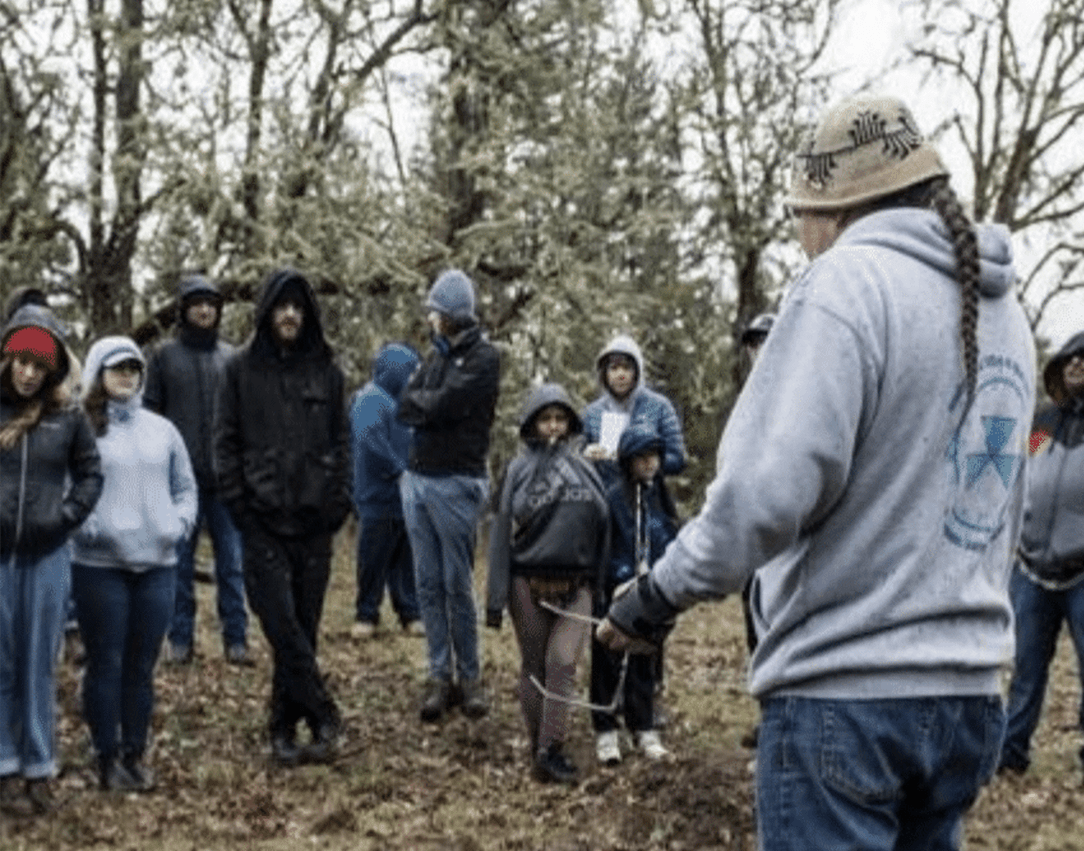
This article is merely the written residue of the real project, which is always in motion. The real project is the cold, sunny March morning in 2019, when five Native youth, a couple of Native oldies like Brian and Joe, and a handful of non – Indian adults meet at the West Eugene Wetlands education center to examine the seeds they had refrigerated in the fall and prepare to replant them. The real project is a late spring morning in 2019, when Kalapuya elder Don Day of the Grand Ronde tribes demonstrates how to split planks from cedar logs in a traditional way with wooden mallets and antler wedges, the way tribal ancestors used to make plank houses in days gone by.
The real project is summer solstice in 2020, when Siletz tribal member Jessica Douglas led the TEIP’s first camas pit roast at the conservation trust land, based on archival instructions from her ancestor, Hoxie Simmons. The real project is the community we build when we work together on these projects of Indigenous food sovereignty and place. The real project is planting Indigenous companions wherever we are, and being good companions, too.
Previously published in Environment and Planning E: Nature and Space. https://doi.org/10.1177/25148486221126618

Print of camas plants and a camas bulb by Jessica Douglas. Photo by Brian Klopotek. June 2020.
UO Libraries| Digital Scholarship Center
This work is In Copyright-Educational Use Permitted.
Contact the Caribbean Healers Project for additional use.